Muffled Screams and Broken Dreams: The Great Corporate Time-Heist — Part 5: Resistance
You’ve learned to observe your environment, now we teach you the spite of a warrior

Welcome to the fourth article of our multi-part series affectionately titled Muffled Screams and Broken Dreams: The Great Corporate Time-Heist. You can find the other articles here:
1. Intro: The Aworkening
2. Part 2: Reconnoitering and Shit
3. Part 3: Survival — MVP+1
4. Part 4: Evasion — Counter-Strategy Strategy
5. Part 5: Resistance — Spite of a Warrior <- You are here
6. Part 6: Escape — Fleeing the Scene
We also have a twitter where we tweet our most profound ideas, discoveries, and failures. We keep it over here @MinimallyUseful. She’s not much but we haven’t abandoned it yet, unlike our hopes and dreams.
Part 5: Resistance — Spite of a Warrior
What are we doing? We just kind of do what we do. A sprinkle here, a dash there. You know. Stuff that isn’t useful, but also stuff that isn’t not useful. Last week (as of us writing this) we used Machine Learning to see into the future (seeing what Donnie T’s Post-Dementia diagnosis tweets would look like) — the future is bright, but so is the blast of a 50 megaton nuclear bomb. This is part 5 of our series. For those of you with the courage and strength of will to do more by doing less, we’ve got a professional certification available to certify that you’re wicked good at strategy and shit.

Disruption of the MBM (Malevolent Business Mindset)
We now begin phase 2 of our ongoing operation in earnest. In the first phase we developed the basis for our defensive and observational skills. We developed a resilient mindset, evaluated traps to pull you back into the MBM and developed a minimum level of productivity to remain out of the scrutiny of those with the MBM. Now that we’ve created the foundation of defense, it’s time to go on the offensive. This article is all about disrupting the MBM and cultivating the sweet, sweet feel-good moments when you get to resiliently stand against the MBM and telling it to go fuck itself.
Resistance
Hello Darkness, My old friend.
The disembodied voice of Ronald Reagan’s Dark Soul Re-entering Hell (to resounding cheers and applause) also it might be lyrics to a song or something, presumably also by Reagan

Strategy Core Concept: The Ol’ Razzle Dazzle
Have you ever lost an argument to someone who was technically correct? They got you on one tiny little bit of semantics, one teensy weensy slip up. They KNEW the spirit of what you were arguing, but chose to take the low road and bust you on the rules. How infuriating was it? What about when you let the dog out, it got into some shit and came back in the house and got said shit all over the house. Also infuriating right? The dog didn’t know any better (that you’re aware of). In both of the previous scenarios, there’s a part of the anger that remains unresolved — because of the fact it’s anger directed at yourself. YOU should’ve argued more coherently. YOU called the dog into the house. That, right there, is the tastiest anger. Now, imagine if you could harness the dark arts of ‘technically correct’ and ‘(perceived) blissful ignorance’ onto the MBM (Malevolent Business Mindset). Welcome to the Thunderdome MBM, our weapon is playing by the rules. Prepare for a full-compliance beatdown.

Give ’em what they want aka Spite Compliance
How do you change minds? We’re humans, so let’s be real. It’s not going to be through civil discourse. No. It’s going to be through what we affectionately call Spite Compliance (also known as malicious compliance in other circles). Here’s a brief example of how you can turn obedience into a weapon:
In 2007 a group of college students who believed that the speed limit was inappropriately slow on I-285 drove the speed limit across all lanes and backed up traffic for miles. Here’s a video: Link.
There’s beauty and elegance in the resistance there. They complied to ALL rules and regulations (with some debate about the lawful adherence vs socially proper usage of the passing lane), and in doing so, they created a result that opened eyes about the rules and controls put upon the drivers of I-285. They said “do you see what your own bullshit gets you?”.
Spite Compliance:
First let’s talk terminology. In this interaction we’ve got the customer — they’re the person / people being served; those receiving your service. The customer provides you with requirements. Requirements are basically the rules / directions / stipulations / desires around what they want from you. The act of demanding something from you is the ask. The customer will give you the ask via some form of communication. Create a hard copy that contains the details of the ask. This is called a paper trail.
- A customer gives you an ask. They provide you with requirements. They have an image of the outcome that they want in their head, and you’re going to give it to them. (make sure you’re developing a paper trail)
- Here’s where things deviate a bit. If the ask is something profoundly stupid, just follow the directions and attempt to deliver the profoundly stupid results and go to step 4. If the ask seems like a time-waster or busy work, but isn’t necessarily profoundly stupid, go WAY overboard on the task while still delivering on all the requirements.
- Evaluate the task — Opine on the requirements. Decide HOW you’re going to go overboard.
- While working on the task, put on your biggest fucking smile. Get excited about it. It’s like you just won everything your heart desired. If possible, try to make those with the MBM think that maybe they’ve gotten through to you. You’ve seen the light of their superior management skills and now you are ready and willing to commit it all to the cause (of filling your CEO’s pockets). Really ham it up. If you know any soft shoe jazz tap routines, maybe whip those out.
- Deliver the overdone product. Beware — Your customer isn’t going to like this part very much, as long as you did it right and they aren’t a complete idiot. This is why we have you developing the paper trail. A paper trail will illustrate that you did exactly what you were told. Additionally, the hamming up you did in step 4 will make it seem more like you’re the family dog that just knocked over a vase because you were so excited that your family just got home. Look at that face. How could you be mad?
- Await the fallout, but make it seem like you’re genuinely bummed about the whole ordeal. This is why step 4 is necessary. Those with the MBM will not want to discourage your enthusiasm to go above and beyond, but they will also not trust your ability to do so in the future.

Here’s a TOTALLY FICTITIOUS but relevant example.
You’ve been tasked with developing a slideshow. The customer’s are the COO (Chief Operating Officer) and the CEO. They feel that your team needs to review some soft skills. They want all of you to be salespeople, regardless of your position. The customers want you to read a book that details how to communicate with people, and the specific ask is for you to read and present on a one chapter. Your chapter is on manipulating people’s mood. It is 8 pages long.
Let’s go through the steps and then review the end product and reaction.
- Requirements of the Ask: Make a presentation based on a chapter of a book.
- While this ask is not necessarily profoundly stupid — it is a waste of time and goes beyond your social contract — they want you to be a good salesperson, but you aren’t one. THAT’S WHAT THE SALESPEOPLE ARE FOR. By delivering the exact ask, you wouldn’t really be in the realm of spite compliance. You’d just be doing what the customer wants — and that’s no fun. You decide you’ll need to go overboard to get the message across.
- Opine: You know the customer is asking for a brief presentation, but did not explicitly mention it — there’s an opportunity to overdo. There’s no hard time and length requirements. Additionally, there was no mention in the requirements that you couldn’t fold in additional resources.
- You’ve got the direction. Time to start. Skim your chapter to pick up on the central themes. Throw those in a list. The ask was to cover the chapter about people’s moods. Pepper in some social theories from prominent thinkers. Mood is also biophysiological — hormones and shit. Neurotransmitters. The Limbic System. How we react to stimuli. Be sure to throw in a lot of pictures and graphs. Throw in a few slides about your impression of the book and rebut some criticisms of the theories presented to the crowd so that they have a balanced presentation of the information. Oh! You should probably have a Q&A session at the end for good measure. You ensure that it’s obvious that you have done a lot of extra work. You also make sure that none of the additional content is useful as a supplement to the customer’s ask in any way. You delight in the juxtaposition of the book chapter being 8 pages, and your slideshow being 5x that amount.
- Your slideshow is floating around 40 slides at this point. Your talking outline is eight pages front and back. You’ve done two run throughs and are able to stretch the material to an hour. You’ve dressed in your best presenting suit. You are chipper and engaged. You present the slide show in all of its glory. Occasional glances to the customer show that they are conflicted. On one hand, you’ve done exactly what they’ve asked and even gone above (debatably) and beyond the ask. On the other, there’s just enough spite peppered into the presentation that the customer is wondering if you are doing this intentionally.
- After your presentation the customer confronts you. Here’s the beauty in your design. You get to play stupid — it’s your bulletproof shield. You tell the customer this was something you’re super passionate about. Psychology was your favorite course in college and you deal with people all day as part of your job after all. You thank them for giving you the opportunity to work on such a meaningful project. They can’t be mad. You did what they asked. In fact, you delivered a product 100x what they asked. There’s no way they could definitively prove that you were only doing this to take the wind out of their sails. They walk away. You laugh like a bond villain. You’re the only one of your peers that is not asked to return and present on an additional chapter.

At the end of each of these grand experiments, you achieve multiple goals.
- You highlight to the customer, that the ask wasn’t such a great idea.
- You will now end up doing less overall because the customer fears a repeat performance.
- You maintain good standing and further entrench yourself into the favorable side of the MVP+1 model by visibly displaying that you have done a lot of work — without being helpful.
- Did you spend WAY too much time on it? Yeah. Probably. 40 Hours to research, develop the presentation, practice, buy a suit, etc… might seem like a lot. But the sweet taste of unresolved frustration in those with the MBM (Malevolent Business Mindset) is your payoff here. It tastes like victory.

Spite Compliance — Under-doing:
Spite Compliance takes many forms, so you may be wondering if under-doing is also acceptable. It is, with a BIG caveat. You’ve got to remember your other training. MVP+1 is all-important. Under-doing could threaten your MVP+1 status if others might perceive you unfavorably — meaning you’ll have to do more work down the road to make up for it. You need an artist’s mind to properly keep all the plates spinning when committing an act of spite compliance. If you’re not feeling like going way overboard is your desired flavor of spite compliance, here’s another route.
Under-do in a way that doesn’t feel like under-doing to the perceiver. Under-do in a way that makes others uncomfortable. If you’re going to go the low content route, put a bit of an artistic spin on it. Here’s a low effort version of the mood presentation that we’ve “rebranded” with… SLAM POETRY.
Scene: A solitary figure stands before a crowd of onlookers — it’s you — The Hero. A single slide appears on the screen set before the audience. It says:
Moooood
By MUI
The hero looks to the sky as they inhale sharply. They level their eyes with the audience. As they begin their presentation, the hero yells the following:
I LOOK AT YOU [whisper: mood mood]
YOU LOOK AT ME [whisper: mood mood]
WE [clap] LOOK [clap] AT [clap] EACH [clap] OTHER [clap]
IT MAKES US [gasp]
FEEL… SOME… THING [two dramatic claps]
[pause until the audience wonders if the presentation is over]
FEEL SOMETHING LIKE… [long pause]
MOODS
[take a bow]
Now. We’ve managed to cover everything you need to cover in thirty-ish words — that’s pretty low effort. If you feel that the audience (and/or the customer) wants more, simply add a “discuss amongst yourselves for a few minutes”. Your bosses (the customers in this case) could argue that it’s not a summary in a traditional sense. You’re an artist — just use phrases like “I wanted to make people feel a mood. It’s a powerful takeaway. The lesson was in the words NOT spoken. ‘’ You put yourself WAY out there by doing something different, your bosses won’t want to stifle your creativity and inventiveness if you brand it as innovation. You could also try interpretive dance, making everyone meditate in complete silence or finger puppet shows — to name a few low-effort alternatives.
Spite Compliance — Last Words
As with all versions of spite compliance. It’s important to fully commit and sell that you, IN NO WAY, are doing this to fuck with anyone (even though you are). You’re just a lovable buffoon who missed the mark by being TOO passionate about an ask. Being smarmy or a smartass about it kills the nuance, and makes an intentional mockery of the ask. You want it to come off as entirely UNintentional.
Life in the Wild
Now onto the ever-popular picture book or shitty animal analogy. Due to us being functionally illiterate and a distinct lack of artistic ability, here’s a shitty animal analogy for Spite Compliance:
For the sake of honesty and transparency:
Sigh. We really wanted to run with this whole “spirit animal” schtick through the series. But, fuck a duck. We can’t think of one spitefully compliant animal besides humans. The closest we got was killer whales eating their trainers at Seaworld. It didn’t feel like it locked in 100%. We were thinking: The customer was the trainer. The ask was asking the killer whale to do killer whale shit in front of people. The overdoing it part was the whole “killer whales eat other animals, why not devour this person in my tank?” It kinda fits, but our heart isn’t in the analogy.
In Closing
Winston “The Heat Is On” Churchill once said, “The price of greatness is responsibility.’’ We’re training you to be one of the greatest shitlord masters of tomfuckery the world has ever known. You’re becoming corporate Robin Hood — stealing your time back from corporate. But, you’ve got to keep the most important part in mind. This corporate SERE training means nothing if you’re found out. It relies on anonymity. All the skills we’ve taught you to date require nuance, deftness, a hint of artistry, and most importantly — control. You can’t be pulling shit like this everyday. It’ll blow your cover. Remember, this is not a revenge story. This is the story of you valiantly liberating and defending your time from some greedy suits — while still remaining the hero. Keep you honor in tact. Uphold the social contract between you and your employer. Don’t become the villain of your own story. Shameless plug: This is also the story of you obtaining our wicked sweet certification.
This concludes article 5 in our series towards professional certification. If you’re interested in getting the cert, head on over to www.minimallyuseful.com. In the next article, we’re going to close with the finer points of escaping in the corporate environment.
Thanks for reading.
